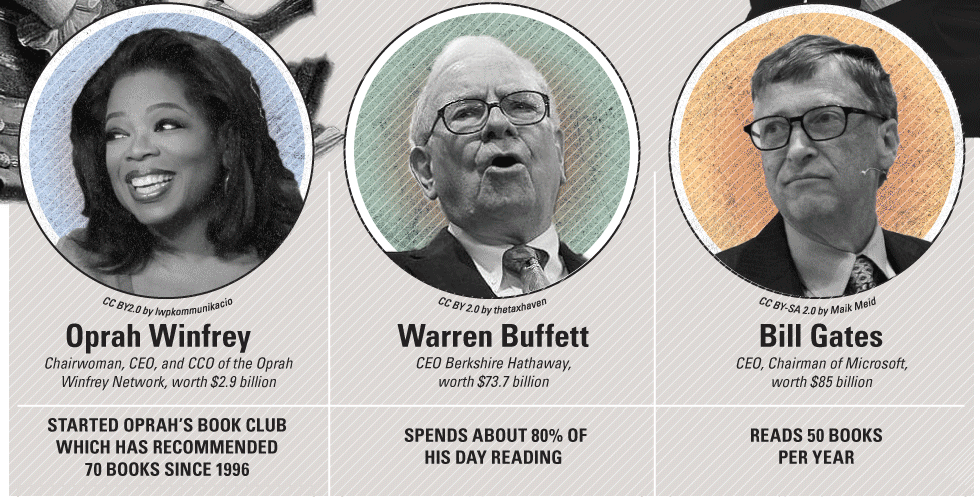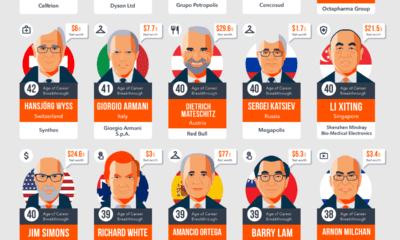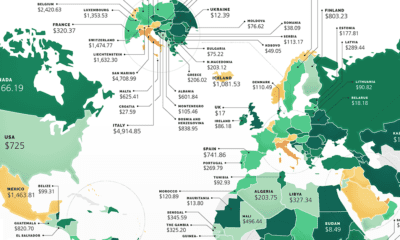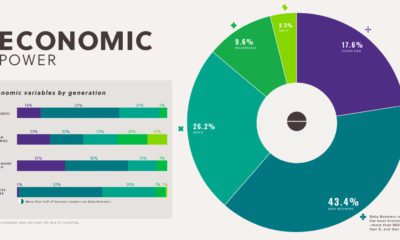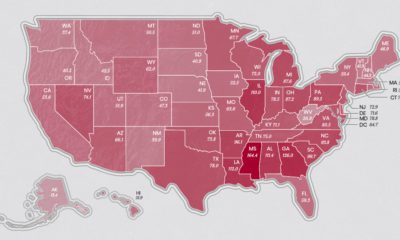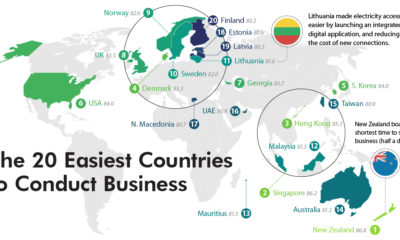Through the power of the internet, entrepreneurs have the choice of a variety of platforms and business models, all with almost zero barriers to entry. Today’s startups may take many forms: some are run as side hustles on shoestring budgets, while others may be backed by venture capitalists at multi-million dollar valuations even before a cent of revenue is generated. While it is true that today’s entrepreneurs must be able to navigate this unique landscape, many of the crucial habits adopted by the world’s highly successful entrepreneurs are actually quite timeless and applicable to most situations – and anyone can take them up as long as they are committed to results.
What Habits do Highly Successful Entrepreneurs have?
Today’s infographic from MBAnoGMAT.com highlights the fruitful habits that many generations of business leaders have relied upon time and time again. “Get the Most Out of Each Day” Time is a precious resource – and people like Ben Franklin or Elon Musk have previously built their schedules to maximize the amount of productivity they get out of each day. Franklin had a 13-week self-improvement plan, in which he focused in on one specific “virtue” that he valued each week. Meanwhile, Musk schedules his days in five minute intervals to minimize wasted time. “Look to Learn” With zero barriers to information, you now have access to more words of wisdom than anyone throughout history. Warren Buffett, Bill Gates, and Oprah Winfrey understand this – and they make reading and acquiring new knowledge a central part of their self-enrichment strategy. Buffett, who is known for his voracious reading habit, says reading is like compound interest: “Stay Fresh With Exercise” Richard Branson wakes up at 5 A.M. every morning to kite surf, swim, or play tennis. Why? He claims this gives him an extra four hours of productivity each day. Go too long without an exercise routine, and you may find your ideas running on fumes. “Possess a Strong Mindset” According to many of the world’s highly successful entrepreneurs, the biggest barrier to success is psychological. About 80% of businesses crash and burn in their first 18 months, but many of the entrepreneurs on the other side of that statistic are the ones who simply refused to give up. It takes time to build a reputation and a brand, and sometimes the fruits of these labors do not show up as fast as an entrepreneur would like. Self-starters who stay mentally strong will come out of this process, which always takes longer than expected, with a better shot at success. on But fast forward to the end of last week, and SVB was shuttered by regulators after a panic-induced bank run. So, how exactly did this happen? We dig in below.
Road to a Bank Run
SVB and its customers generally thrived during the low interest rate era, but as rates rose, SVB found itself more exposed to risk than a typical bank. Even so, at the end of 2022, the bank’s balance sheet showed no cause for alarm.
As well, the bank was viewed positively in a number of places. Most Wall Street analyst ratings were overwhelmingly positive on the bank’s stock, and Forbes had just added the bank to its Financial All-Stars list. Outward signs of trouble emerged on Wednesday, March 8th, when SVB surprised investors with news that the bank needed to raise more than $2 billion to shore up its balance sheet. The reaction from prominent venture capitalists was not positive, with Coatue Management, Union Square Ventures, and Peter Thiel’s Founders Fund moving to limit exposure to the 40-year-old bank. The influence of these firms is believed to have added fuel to the fire, and a bank run ensued. Also influencing decision making was the fact that SVB had the highest percentage of uninsured domestic deposits of all big banks. These totaled nearly $152 billion, or about 97% of all deposits. By the end of the day, customers had tried to withdraw $42 billion in deposits.
What Triggered the SVB Collapse?
While the collapse of SVB took place over the course of 44 hours, its roots trace back to the early pandemic years. In 2021, U.S. venture capital-backed companies raised a record $330 billion—double the amount seen in 2020. At the time, interest rates were at rock-bottom levels to help buoy the economy. Matt Levine sums up the situation well: “When interest rates are low everywhere, a dollar in 20 years is about as good as a dollar today, so a startup whose business model is “we will lose money for a decade building artificial intelligence, and then rake in lots of money in the far future” sounds pretty good. When interest rates are higher, a dollar today is better than a dollar tomorrow, so investors want cash flows. When interest rates were low for a long time, and suddenly become high, all the money that was rushing to your customers is suddenly cut off.” Source: Pitchbook Why is this important? During this time, SVB received billions of dollars from these venture-backed clients. In one year alone, their deposits increased 100%. They took these funds and invested them in longer-term bonds. As a result, this created a dangerous trap as the company expected rates would remain low. During this time, SVB invested in bonds at the top of the market. As interest rates rose higher and bond prices declined, SVB started taking major losses on their long-term bond holdings.
Losses Fueling a Liquidity Crunch
When SVB reported its fourth quarter results in early 2023, Moody’s Investor Service, a credit rating agency took notice. In early March, it said that SVB was at high risk for a downgrade due to its significant unrealized losses. In response, SVB looked to sell $2 billion of its investments at a loss to help boost liquidity for its struggling balance sheet. Soon, more hedge funds and venture investors realized SVB could be on thin ice. Depositors withdrew funds in droves, spurring a liquidity squeeze and prompting California regulators and the FDIC to step in and shut down the bank.
What Happens Now?
While much of SVB’s activity was focused on the tech sector, the bank’s shocking collapse has rattled a financial sector that is already on edge.
The four biggest U.S. banks lost a combined $52 billion the day before the SVB collapse. On Friday, other banking stocks saw double-digit drops, including Signature Bank (-23%), First Republic (-15%), and Silvergate Capital (-11%).
Source: Morningstar Direct. *Represents March 9 data, trading halted on March 10.
When the dust settles, it’s hard to predict the ripple effects that will emerge from this dramatic event. For investors, the Secretary of the Treasury Janet Yellen announced confidence in the banking system remaining resilient, noting that regulators have the proper tools in response to the issue.
But others have seen trouble brewing as far back as 2020 (or earlier) when commercial banking assets were skyrocketing and banks were buying bonds when rates were low.
